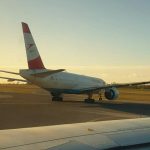As an avid player of Airline Manager 4, I’ve spent countless hours navigating the game’s mechanics, striving to optimize every detail for the perfect airline. One aspect that has always intrigued me is seat configuration. It’s not just about packing as many passengers as possible into your aircraft; it’s about finding the right balance to maximize profit while also keeping customer satisfaction high. I’d like to share my insights on the best seat configuration for different aircraft, taking into account factors like passenger demand, comfort, and profitability.
Understanding the Basics: What Is Seat Configuration?
Before we dive into the details, let’s take a moment to understand what seat configuration is. In Airline Manager 4, seat configuration refers to how you arrange the seats in your aircraft across different classes – Economy, Business, and First Class. Each class has a different cost, comfort level, and capacity, so the decisions you make here significantly impact your airline’s performance.
The Balancing Act: Profit vs. Passenger Satisfaction
When deciding on the best seat configuration, it’s crucial to consider two primary factors: profitability and passenger satisfaction. You might think that filling your plane with Economy seats is the most profitable strategy since it allows you to carry more passengers. However, this might not always be the case.
Premium seats like Business and First Class cost more but also generate more profit per passenger. They take up more space, reducing the total number of passengers you can carry, but the higher ticket prices can more than make up for this. Plus, offering premium seats can improve your airline’s rating, attracting more passengers overall.
On the other hand, packing in too many Economy seats can reduce passenger satisfaction due to lower comfort levels, potentially hurting your airline’s reputation and demand. So, it’s all about finding the right balance.
Configuring Your Short-Haul Fleet
Let’s start by looking at the best seat configuration for short-haul flights. These flights typically cater to price-sensitive passengers who prioritize cost over comfort, making Economy Class the primary focus.
For short-haul flights, I’ve found that a configuration of around 80-90% Economy seats works best. This allows you to cater to the high demand for low-cost seats while still maintaining some premium seats for those willing to pay more for comfort. For the remaining 10-20%, I’d recommend a mix of Business and First Class seats, skewed more towards Business. This is because Business Class seats tend to provide a better balance of cost and comfort for short-haul flights, where the additional luxury of First Class is often less important to passengers.
Remember, this isn’t a one-size-fits-all solution. The best configuration for your airline may vary based on factors like your specific route, the competition, and your airline’s reputation.
Mastering the Long-Haul Game
When it comes to long-haul flights, the dynamics change. These flights often cater to business travelers and wealthier passengers who prioritize comfort and are willing to pay a premium for it. This means a higher proportion of Business and First Class seats can be profitable.
I’ve found that a seat configuration of around 50-60% Economy, 30-40% Business, and 10-20% First Class works well for most long-haul flights. Again, this may vary based on your specific circumstances, so don’t be afraid to experiment and adjust as necessary.
The Super-Long Haul Strategy
Super-long haul flights, such as those over 14 hours, introduce another level of complexity. Passengers on these flights highly value comfort given the extended travel time. Here, premium seats can be particularly profitable, and the demand for Economy seats may be lower.
I usually opt for a configuration of around
40-50% Economy, 30-40% Business, and 20-30% First Class for super-long haul flights. This configuration provides a good balance of high-profit premium seats and lower-cost Economy seats, catering to a wide range of passengers. However, these proportions can be adjusted based on the specific demographics of your passengers and the competition on your routes.
Don’t Forget About Your Aircraft Type
Different aircraft types also influence the best seat configuration. Larger aircraft like the Boeing 747 or Airbus A380 can accommodate more First and Business Class seats without significantly reducing the number of Economy seats. On the other hand, smaller aircraft like the Airbus A320 or Boeing 737 might be better suited to a higher proportion of Economy seats due to their limited capacity.
When configuring seats in your aircraft, also consider the aircraft’s range and typical routes. If you’re using a long-range aircraft like the Boeing 777 for short-haul flights, you might want to consider a higher proportion of Economy seats to cater to cost-conscious short-haul passengers.
Tailoring Your Strategy to Your Airline’s Brand
Your airline’s brand and reputation also play a significant role in determining the best seat configuration. If your airline is known for luxury and high-quality service, you might be able to fill more premium seats than an airline known for budget travel. On the other hand, if your airline’s brand is all about offering the cheapest flights, a higher proportion of Economy seats could be more profitable.
Think about your target market and the kind of passengers you want to attract. Are you aiming for high-flying business travelers or budget-conscious tourists? Tailoring your seat configuration to your target market can help optimize your airline’s profitability and customer satisfaction.
Trial and Error: The Key to Success
Like many aspects of Airline Manager 4, finding the best seat configuration involves a lot of trial and error. I’ve shared the strategies that have worked best for me, but the optimal configuration can vary widely based on countless factors. Don’t be afraid to experiment with different configurations and adjust your strategy as you gain more experience and learn more about your passengers’ preferences.
Remember, running a successful airline isn’t just about maximizing profit—it’s also about providing a great experience for your passengers. Finding the right balance is the key to long-term success in Airline Manager 4.
Final Thoughts: Mastering the Art of Seat Configuration
In conclusion, mastering the art of seat configuration in Airline Manager 4 is all about understanding your passengers, your aircraft, and your airline’s brand. It’s about balancing profitability and passenger satisfaction, offering a range of options to cater to different passenger needs, and being flexible enough to adjust your strategy as those needs change.
By carefully considering these factors and being willing to experiment and learn, you can find the seat configuration that offers the best profitability and passenger experience for your airline. Happy flying!
FAQ Airline Manager 4 Best Seat Configuration
What is seat configuration in Airline Manager 4?
Seat configuration in Airline Manager 4 refers to how you arrange the seats in your aircraft across the different classes – Economy, Business, and First Class. The way you configure these seats can significantly impact your airline’s performance, profitability, and passenger satisfaction.
What factors should I consider when configuring my seats?
The two main factors to consider are profitability and passenger satisfaction. You need to strike a balance between filling your plane with seats (to maximize capacity and profit) and ensuring your passengers are comfortable (to maintain your airline’s reputation and passenger demand).
What is the best seat configuration for short-haul flights?
For short-haul flights, a configuration of around 80-90% Economy seats and 10-20% premium (Business and First Class) seats often works best. However, this can vary based on factors like your specific route, the competition, and your airline’s reputation.
What is the best seat configuration for long-haul flights?
Long-haul flights often cater to passengers who prioritize comfort and are willing to pay a premium for it. A seat configuration of around 50-60% Economy, 30-40% Business, and 10-20% First Class tends to work well for most long-haul flights.
How does the type of aircraft affect seat configuration?
Different aircraft types can accommodate different numbers of seats, affecting the optimal seat configuration. Larger aircraft can accommodate more premium seats without significantly reducing Economy capacity, while smaller aircraft might be better suited to a higher proportion of Economy seats due to their limited capacity.
How does my airline’s brand affect seat configuration?
Your airline’s brand and reputation can significantly influence the best seat configuration. If your airline is known for luxury, you might be able to fill more premium seats. Conversely, if your airline is known for budget travel, a higher proportion of Economy seats might be more profitable.
What is the best way to determine the optimal seat configuration?
The best way to determine the optimal seat configuration is through trial and error. Experiment with different configurations, monitor the results, and adjust your strategy based on what you learn. Keep in mind that the best configuration can vary based on a wide range of factors, including your specific routes, the competition, your airline’s reputation, and passenger preferences.
More Articles about Airlines Manager 4
- In-depth Review and Analysis of “Airlines Manager: Plane Tycoon”
 Overview Airlines Manager: Plane Tycoon “Airlines Manager: Plane Tycoon” is a comprehensive and highly engaging simulation game developed by Playrion, which allows players to step into the … Read more
Overview Airlines Manager: Plane Tycoon “Airlines Manager: Plane Tycoon” is a comprehensive and highly engaging simulation game developed by Playrion, which allows players to step into the … Read more - Airline Manager 4 Best Seat Configuration – Unleashing the Best Seat Configuration in Airline Manager 4
 As an avid player of Airline Manager 4, I’ve spent countless hours navigating the game’s mechanics, striving to optimize every detail for the perfect airline. One aspect … Read more
As an avid player of Airline Manager 4, I’ve spent countless hours navigating the game’s mechanics, striving to optimize every detail for the perfect airline. One aspect … Read more - Airlines Manager – Which Hub
 Whoever joins the game often has one thought first: start the game from your home airport. The first hub – it should be the nearest airport that … Read more
Whoever joins the game often has one thought first: start the game from your home airport. The first hub – it should be the nearest airport that … Read more - Airlines Manager – The Best Tipps / Tricks 2021
 Airlines Manager is developing into a popular game for smartphones and PCs. However, you can get a lot more out of your smartphone by watching ads. This … Read more
Airlines Manager is developing into a popular game for smartphones and PCs. However, you can get a lot more out of your smartphone by watching ads. This … Read more - Airlines Manager Tycoon Best Route
 Airlines Manager Tycoon is a popular Android game for all airplane enthusiasts. But how can you create routes that are as profitable as possible in a short … Read more
Airlines Manager Tycoon is a popular Android game for all airplane enthusiasts. But how can you create routes that are as profitable as possible in a short … Read more

